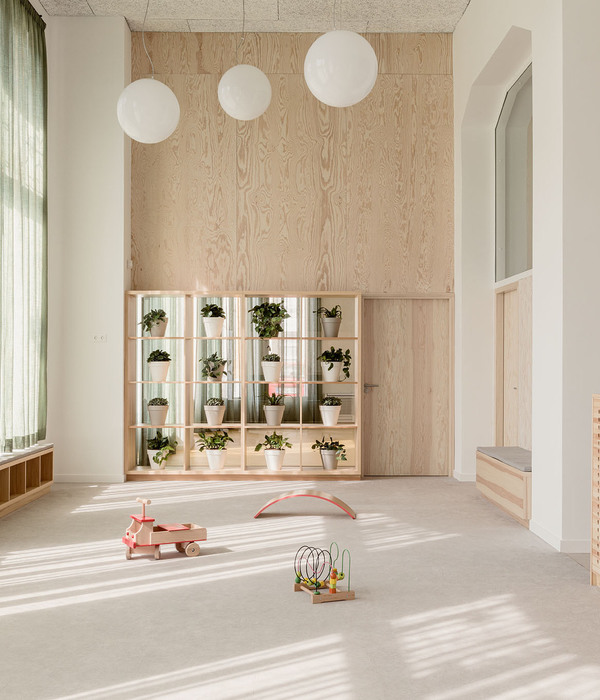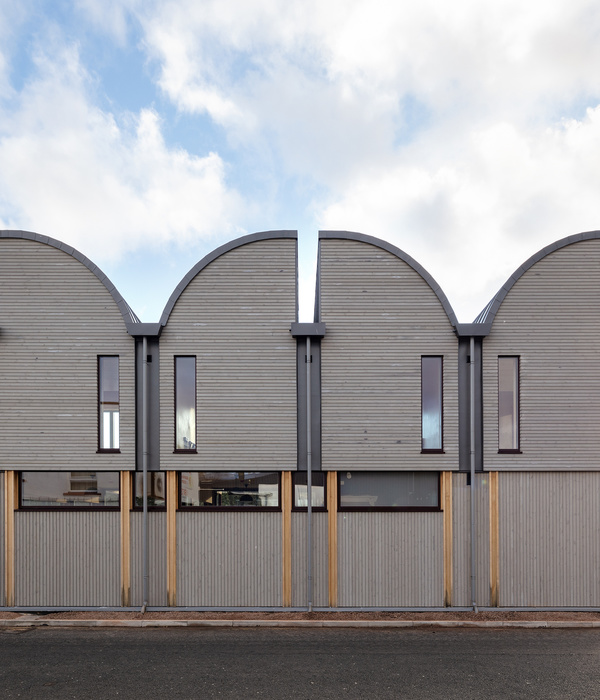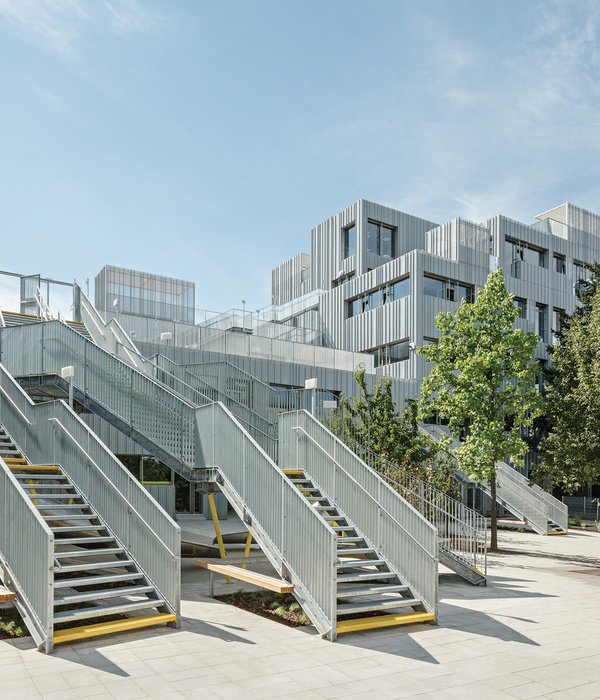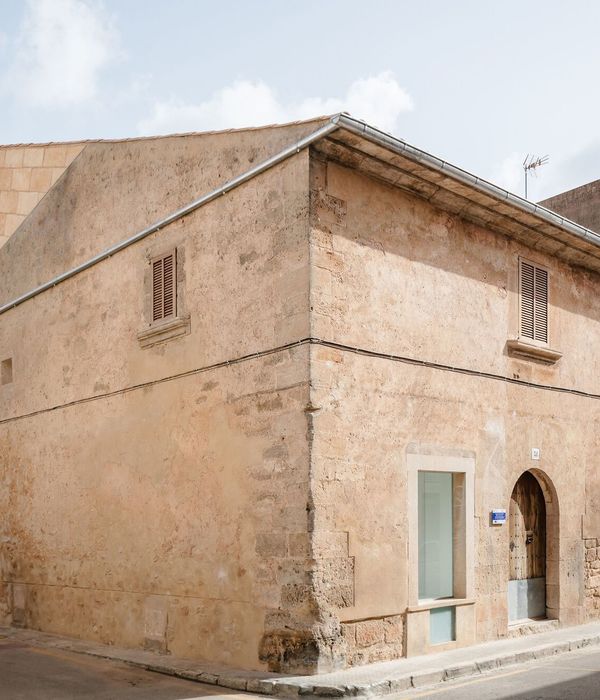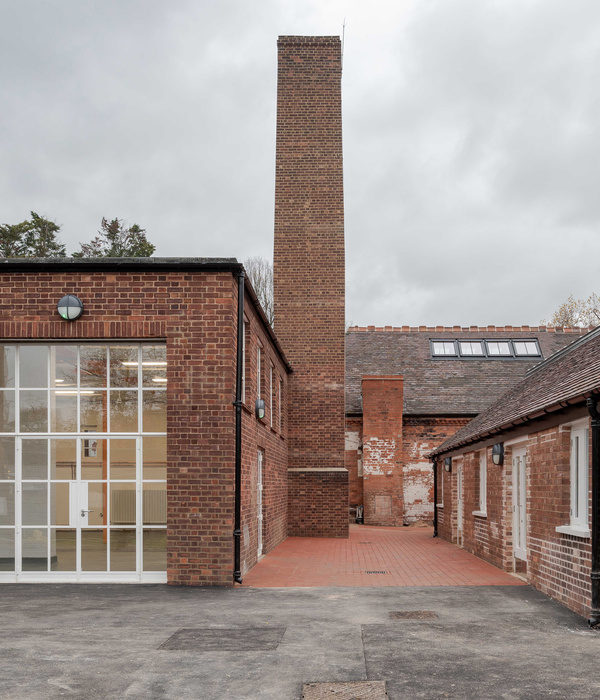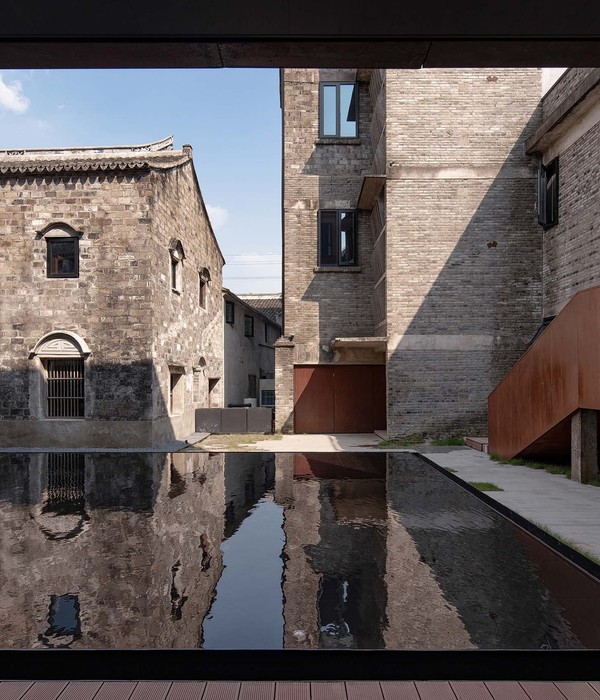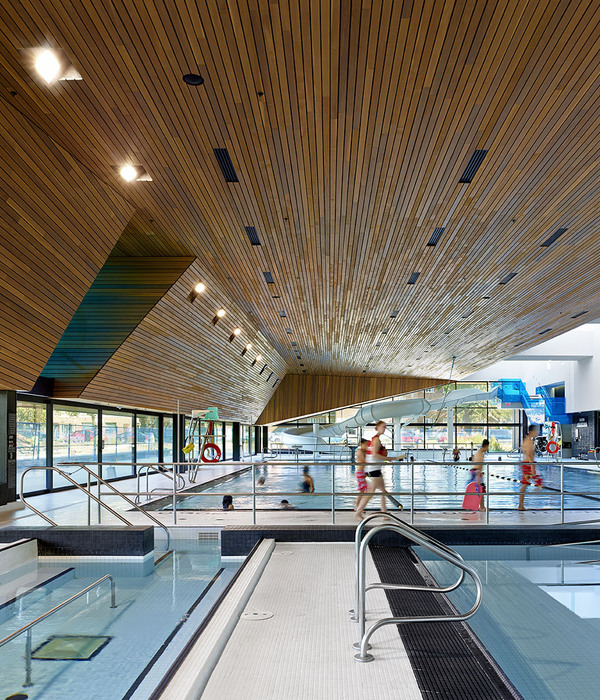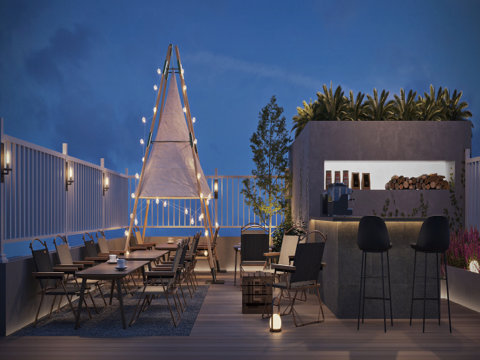Architects:Lestudioarchitects
Area:175m²
Year:2021
Photographs:Hoang Le
Manufacturers:Alis
Lead Architect:Hoang Le
Lighting Consultants:Alis Lighting
Schematic Design:Dung Pham
Visualization:Linh Mai
Country:Vietnam
Text description provided by the architects. The temple is located on the "pilgrimage path" of the parish, connecting 3 main structures, including the cathedral, the temple, and the natural water surface, forming a "sacred" axis stretching the length of the site (along the north-south direction). The final destination that can be reached on this journey is the holy temple with a relatively solid and closed architecture (the main hall is structurally designed to create a feeling of compression and weight to lower the roof height according to the field of vision)
However, in contrast to the outside appearance, when entering the interior, the holy temple is designed to open a large frame in the harem, facing the water and natural greenery surrounding the land's northern boundary. The “Closed” and “opened” aspects in this sequence of structures (closed[church] - open[landscape] - closed[temple] - open[natural landscape]) contribute to a heightened sense of changes regarding the experiences of visitors. The sense of movements and journeys are emphasized in the masterplan when compared with architectural subjects while simultaneously serving the intention of the continuity of an ever-extending "sacred" axis towards nature in the overall planning process.
In this masterplan, we think that the water feature surrounding the harem of the building is an organic extension of architecture, showing how the structure exists in modest relation to the natural landscape (the height and size of the building are carefully considered to fit the surrounding), in turns, the inherent natural scenery here also creates a "big" harem, or a "green" background that surrounds the architecture itself. This connection lies in the overarching intention of the project, recalling the early spiritual perceptions when primitive man began to perceive the spirits of nature and always turned to nature in sacred emotions. Also, in this "big canvas," besides the relationship between nature and the temple building, a "lighter" dialogue is created between the temple and the existing structures (for example, the main church). This connection comes from the study of the point of view in the planning to consider the buildings, the height, capacity, or the volume. However, that is not the point to emphasize here.
A system of symbols is used in the project to evoke the local spirit (the temple's large tile roof harmonizes with the surrounding countryside, somewhat recalling the image of the roof of the village’s communal temple). The scale of the building is roughly equivalent to that of the village’s communal temple as well. The relationship between "heaven - earth - human" is expressed consistently, quite clearly along the horizontal axis (front - inside - outside) or the vertical axis (base - body - roof). The base (earth - includes the decorative "terrain" details in front of the holy statue), the body (human - the space occupied by users/visitors), and the roof (heaven) with an emphasized and complex structure (even excess in terms of strength due to the habit of handling traditional wooden structures) but expressing a profound upward spirit often found in ancient architecture (Northern and Vietnamese in general).
The main materials are brick and wood, which are treated rustically to resemble local life. Inside the temple, the old stone retained from the old church foundation is used as the pedestal for the Saint statue. This gesture means to honor the martyrs who are the foundation stones of the Vietnamese Catholic Church. At the same time, the other inherent symbols of Christianity remain (the statue of the Cross, the statue of Jesus, etc.). This entire symbolic system is carefully placed in a variant of the Western scholastic temple plan (pseudo dipteral form).
With a religious work, we believe that symbolism and polysemy transcend the interpretations of functionalism and structuralism. Our research and skillful combination of the above factors contribute to minimizing compulsions in the design. Also, the symbolic system is a reminder of the ambiguity in the religious consciousness of the Vietnamese people (according to Professor Tran Quoc Vuong).
Project gallery
Project location
Address:Bình Lục District, Hà Nam, Vietnam
{{item.text_origin}}

